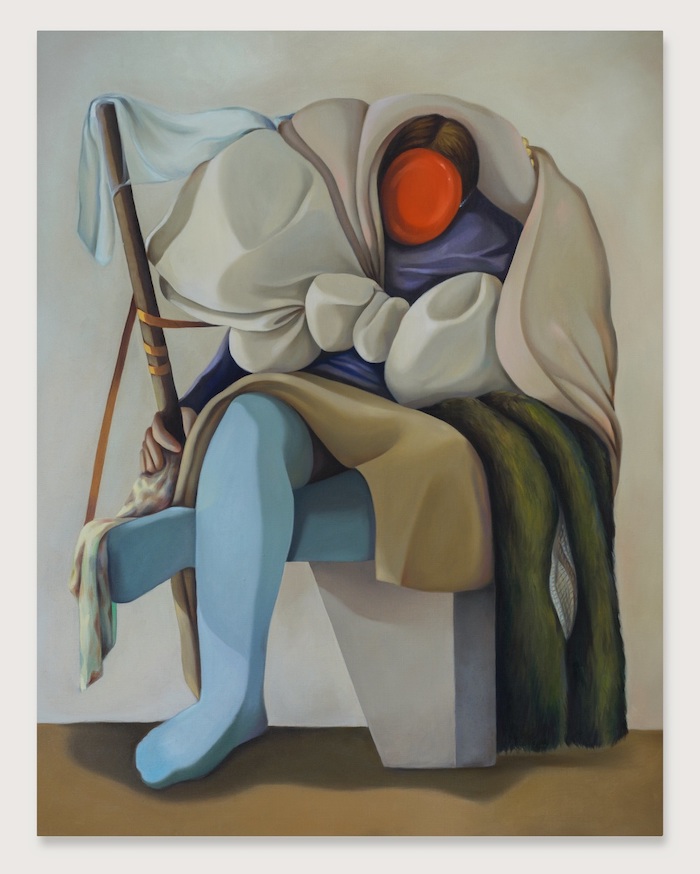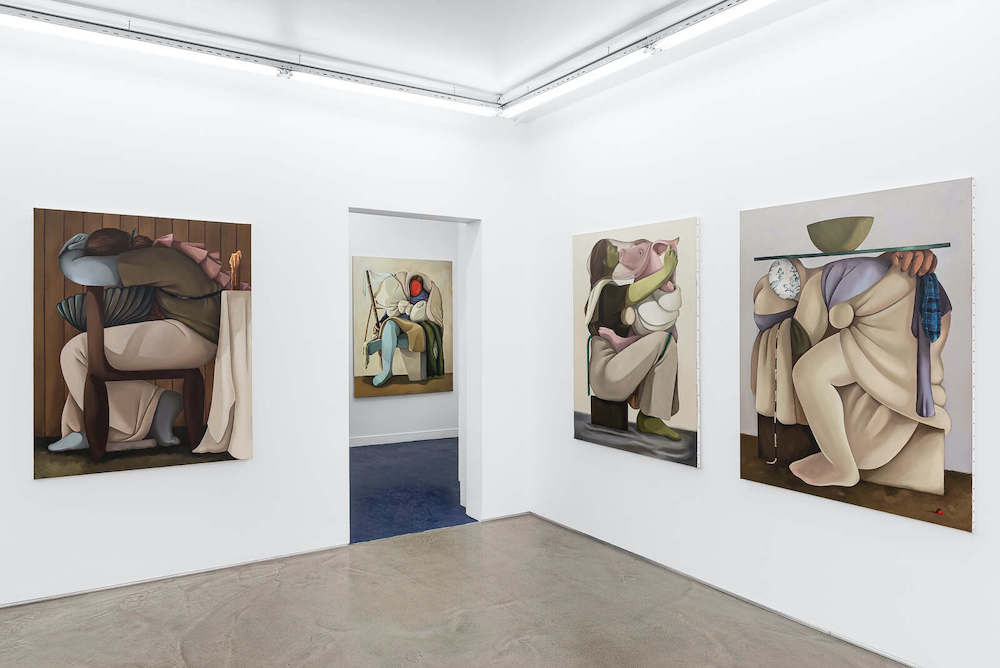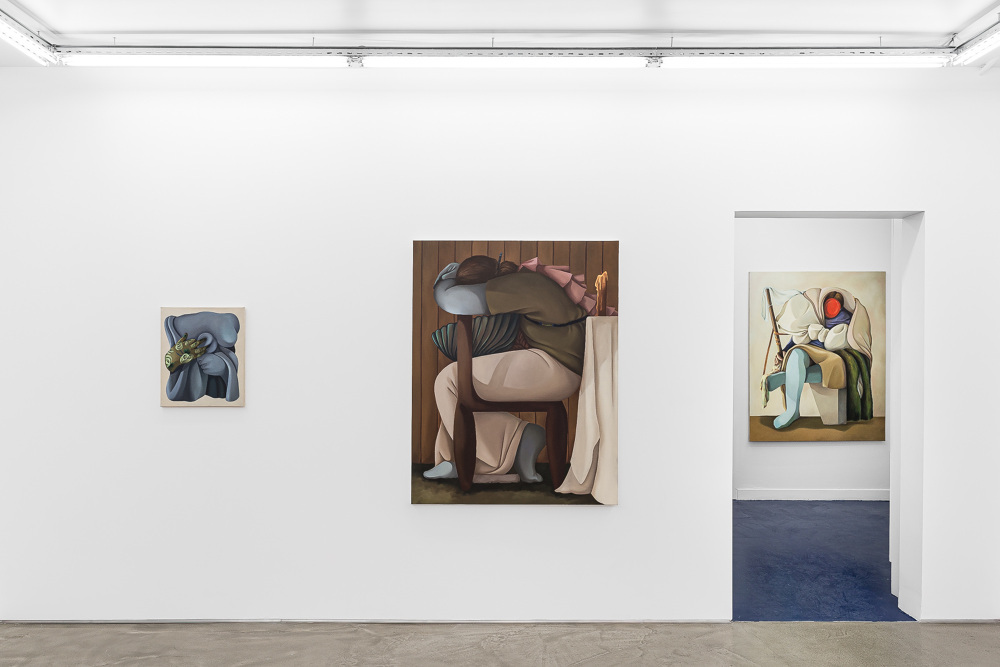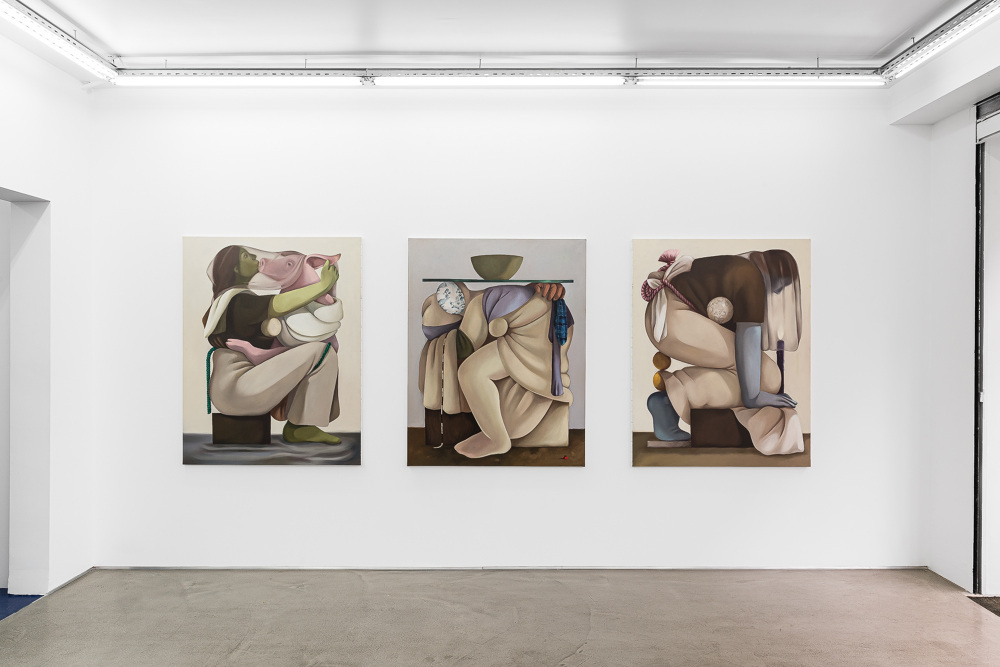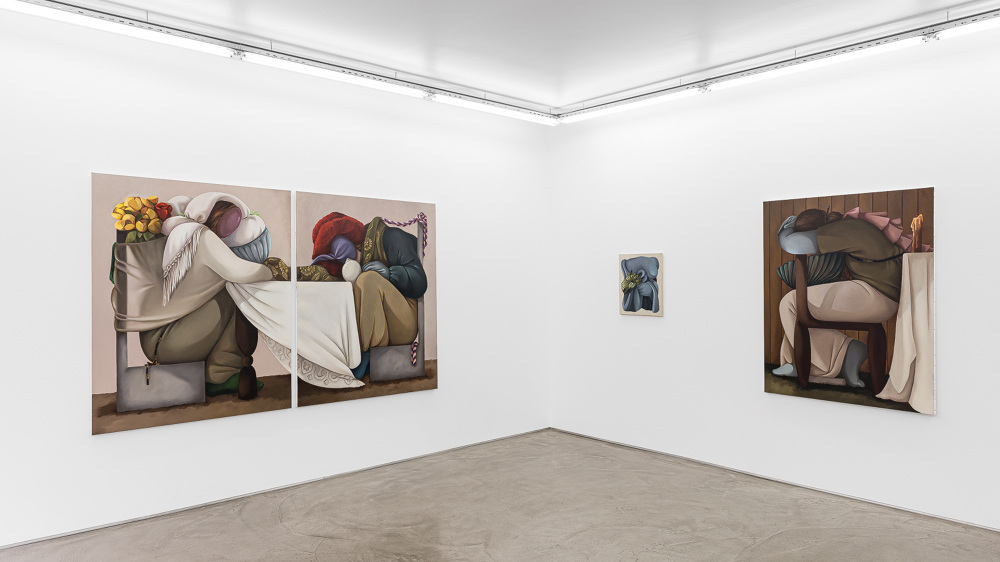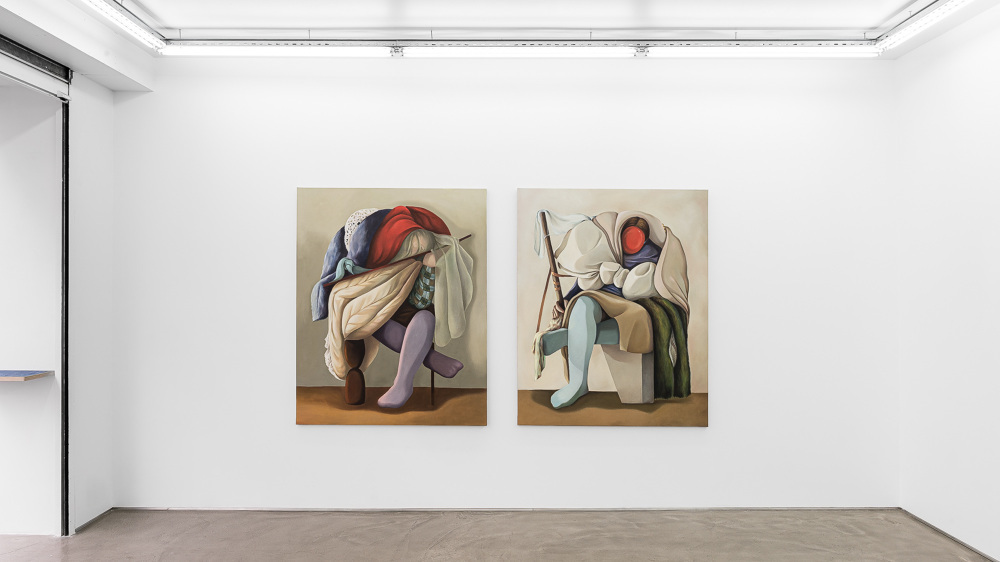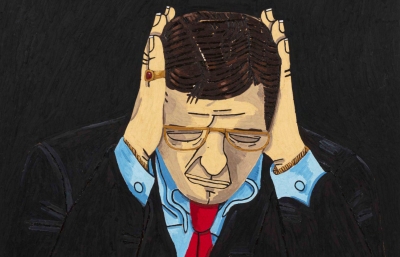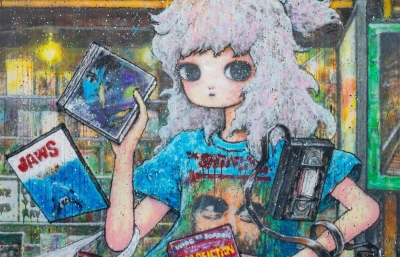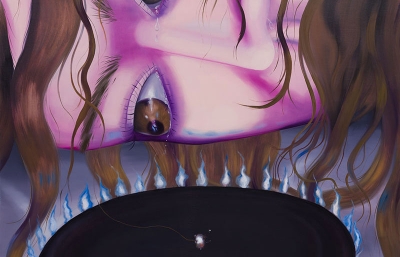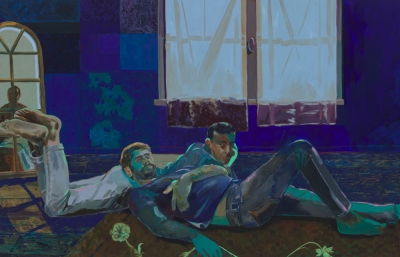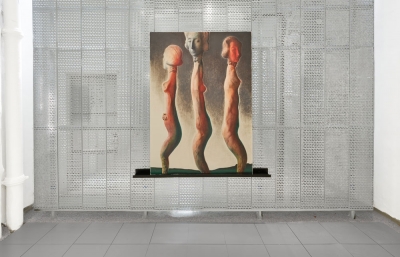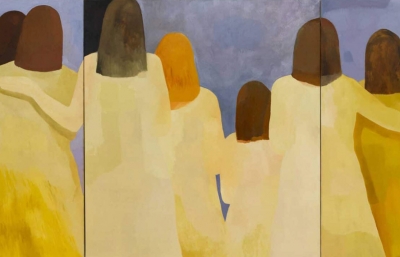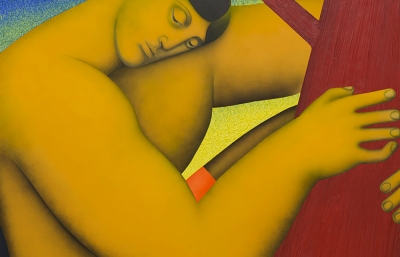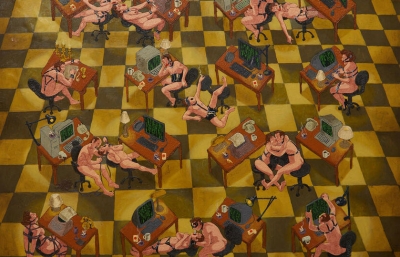The vast amount of selfies we scroll through everyday on social media all present the same evened-out features. Altered by filters that dictate a same standardized expression, these portraits present an almost cyborg appearance. This “instagram face” is an unrealistic sculpture shaped by various filters and cosmetic injections. As a mask whose traits are enhanced or smoothened according to the number of likes it receives, its retail value is in this way determined. Diane Dal-Pra’s portraits challenge the norms of this visual identity by concealing our ideal appearance behind a literal mask. The accessory that conceals the faces of her characters - when they are not veiled - offers a full concealment of their bodies under the layers of clothing and domestic objects. At first glance, we cannot grasp who they are. It is only by lingering on these images that we see that each element and posture is a clue to understanding the tensions at play in her portraits.
Diane Dal-Pra here plays on the ambivalent role of the garment, which oscillates between the concealment and revelation of the wearer’s identity. Here lies a principal element of her paintings. Slouching on their chair or over an empty table, the massive figures call upon a certain mystery to awaken “The Uncanny" – a concept dea to the Surrealist movement. The Italian expression that gives its title to the young artist's first solo exhibit at Galerie Derouillon, "Acqua in bocca", refers to what must not be said under any circumstance : that heavy secret we keep to ourselves. What are Dal-Pra's characters trying to hide here ? The face, the eyes and the hands - the most expressive parts of our body that also are the first to establish any social bond - are hidden to avoid any form of contact. The relationships we have with the objects we gather over the course of our lives are essential for the artist, so much so that they swallow the bodies to reveal new contour lines. The garment shell then acts as a filter between an intimacy in need of protection and the outside world : a second skin that Dal-Pra paints with the greatest care.
Alluding to several references from the history of art, the work of the young artist manages to combine a mastery of mannerism with the power of a surrealist evocation. Her residency at Palazzo Monti in 2019 allowed her to explore the masters of the Renaissance and style her own classical art of painting. In La Caduta, the tension between the turned-over characters may remind us of Artemisia Gentileschi’s painting Judith and Holofernes, as they share a similar treatment of fabrics and subtle play on light. Diane Dal-Pra explains that she works on the "memory and sensation" evoked by these fabrics. She brilliantly succeeds in appealing to our synesthetic memory as we have the impression of touching the represented materials. The texture speaks even more than the object – as the latter is not always identifiable – and awakens the sensuality of folds, drapes and fabrics that caress and hide the constrained bodies.
The young painter deploys in her canvases a sophisticated technique, particularly in her treatment of color. The palette of neutral tones lets the eye wander and lose itself between the folds of the fabrics, before being again captivated by the contrast of the bright colors that punctuate and rhythm her paintings. Also revealed are details that create a complicity with the spectator, allowing us to discover over time a tomato fallen to the ground, or a pair of buttocks and a hand embraced by the character under a table. There is however no exterior in these compositions, no way out for a gaze which is captured by the introspection of the character. The mystery that flows from Diane Dal-Pra's paintings is also enhanced by their titles. They often summon an external event or a precedent to the portrait. Your readable story, It belongs to you, Everything you built. I'm just behind what I am for example can only remind us of Magritte, for whom each image "suggests that there are others behind it."
Dal-Pra's canvases venture into surrealist territory as they maintain affinities with Magritte's masked figures and de Chirico's geometric mannequins. The true portrait seems constructed beyond the physical appearance of reality. Her vagabond characters, seemingly lost in thought, reveal costumes that call upon a child’s game or a bohemian wander. They seem composite, like the projection of a phantasmagorical, distorted and indistinct image of oneself : a human form, but with no face and blue-skin. Textile chimeras are created out of entangled bodies. Diane Dal-Pra often conceives her works in pairs – a positive/negative as two facets of the same story, of the same being. They are linked by objects that respond to each other such as with the lit candle in Waiting for the guest and the consumed one in Dinner is over.
The personality of these beings returns to the essence of the persona: a mask that hides our anatomical features to reveal our social face, the way we present ourselves to the world and the relationships we choose to nurture. Dal-Pra herself confesses that she does not know who hides behind the masks, as if the face, relegated after the costume, objets and the relationship we share with them, was no longer necessary to express an identity. These extensions of ourselves are what serve first in our experience of the world. They become indispensable to our existence : from telephones to masks, all inevitably concealing parts of our faces. According to the young artist, through the accumulation of objects over the course of our lives, we become a sort of fabricated ‘totem’ onto which we project an image of ourselves. —Marion Coindeau



